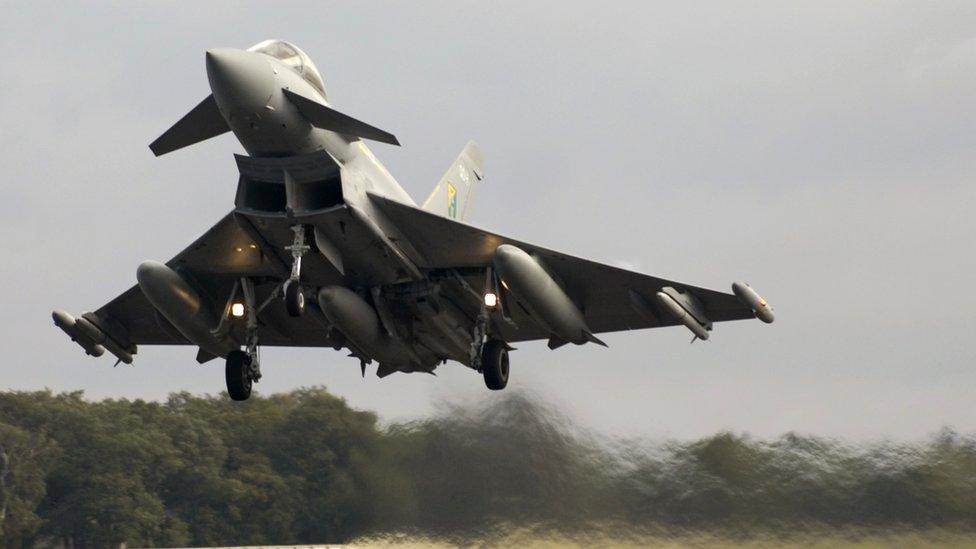Sonic boom: RAF home-schooling lesson after Typhoon intercepts plane
- Published

RAF Typhoons, similar to the aircraft pictured, took off from RAF Coningsby in Lincolnshire and escorted the civilian aircraft to London Stansted Airport
The RAF has offered a "helping hand" to those home-schooling by sharing a lesson on sonic booms after one rattled homes in parts of England on Tuesday.
The boom, at about 13:05 GMT, was reported by people in Cambridgeshire, Essex, Hertfordshire and parts of London and was caused by Typhoon jets intercepting an unresponsive plane.
The plane was escorted to Stansted Airport in Essex when contact resumed.
A video shared on the RAF's Facebook page, external explains what causes a boom.

The RAF video explains how supersonic aeroplanes cause sonic booms
An RAF spokesman said it was "a helping hand for those currently home-schooling".
"Sometimes to protect our skies, RAF Typhoons have to fly above the speed of sound to reach somewhere quickly," he said.

What causes a sonic boom?
When an aircraft approaches the speed of sound, the air in front of the nose of the plane builds up a pressure front because it has "nowhere to escape", said Dr Jim Wild of Lancaster University.
A sonic boom happens when that air "escapes", creating a ripple effect which can be heard on the ground as a loud thunderclap.
The speed of sound varies. It is about 770mph (1,200km/h) at sea level, but slower at higher altitudes. A plane flying at 30,000ft would reach the speed of sound at about 675mph (1,085km/h), according to NASA's educational website, external.
It can be heard over such a large area because it moves with the plane, rather like the wake of a boat spreading out behind the vessel.
RAF jets are only given permission to go supersonic over populated areas in emergencies, usually when they are required to intercept another aircraft.

People's reactions to the sonic boom were caught on camera
What happened on Tuesday?
RAF Typhoons were deployed from RAF Coningsby in Lincolnshire to intercept a civilian aircraft which lost communications in UK airspace.
The "private jet" was believed to have been flying from Germany to Birmingham.
Communications were re-established after the Typhoons were launched and the plane was "safely escorted" to London Stansted, an RAF spokesman said.
On the ground, the sonic boom prompted lots of reaction on social media, including a Facebook post, external from Cambridgeshire Police, which said it had had "numerous calls".
No-one was injured, and no major damage has been reported despite some callers saying the sound had shaken their homes.

Find BBC News: East of England on Facebook, external, Instagram, external and Twitter, external. If you have a story suggestion email eastofenglandnews@bbc.co.uk
- Published12 January 2021
